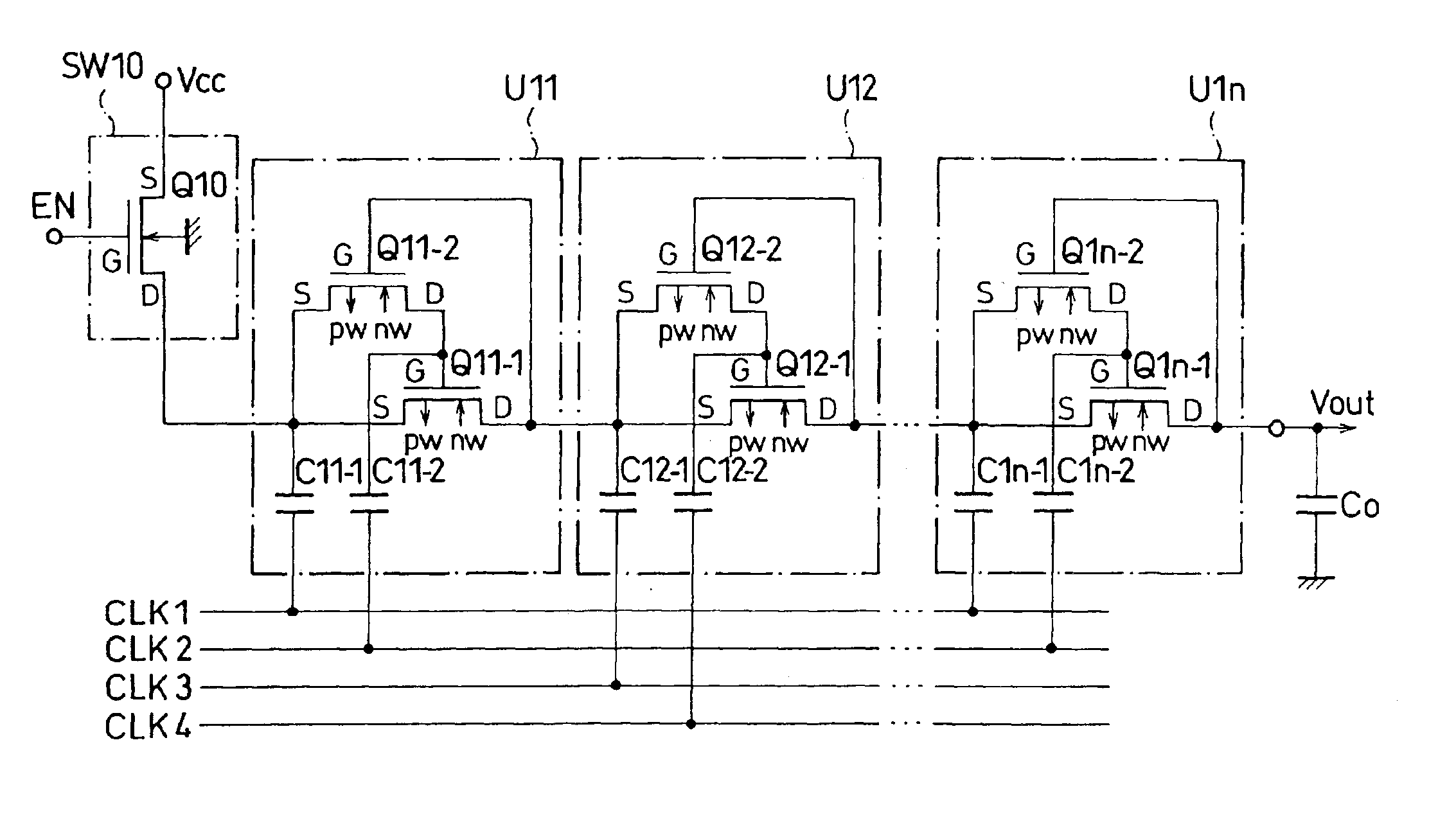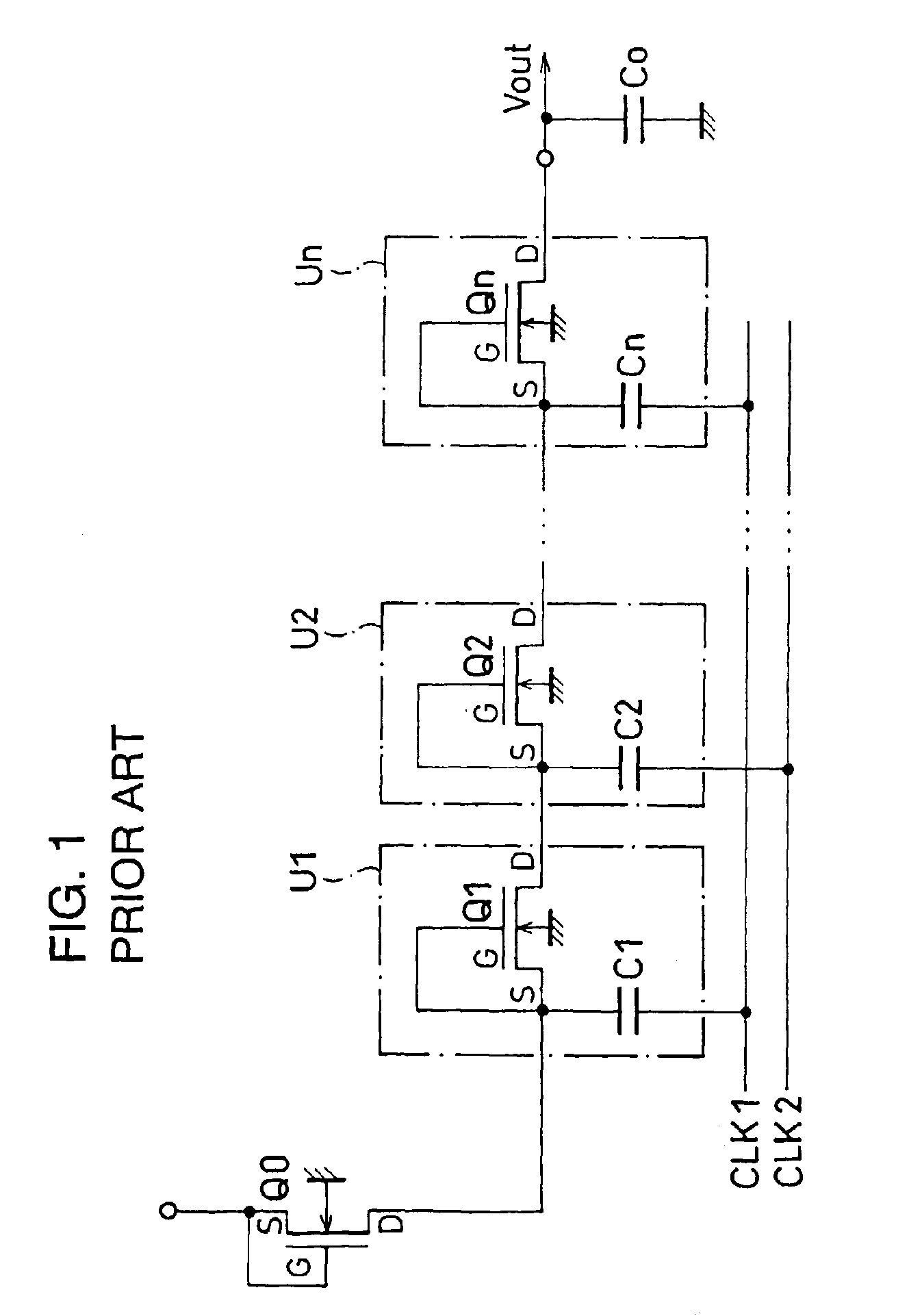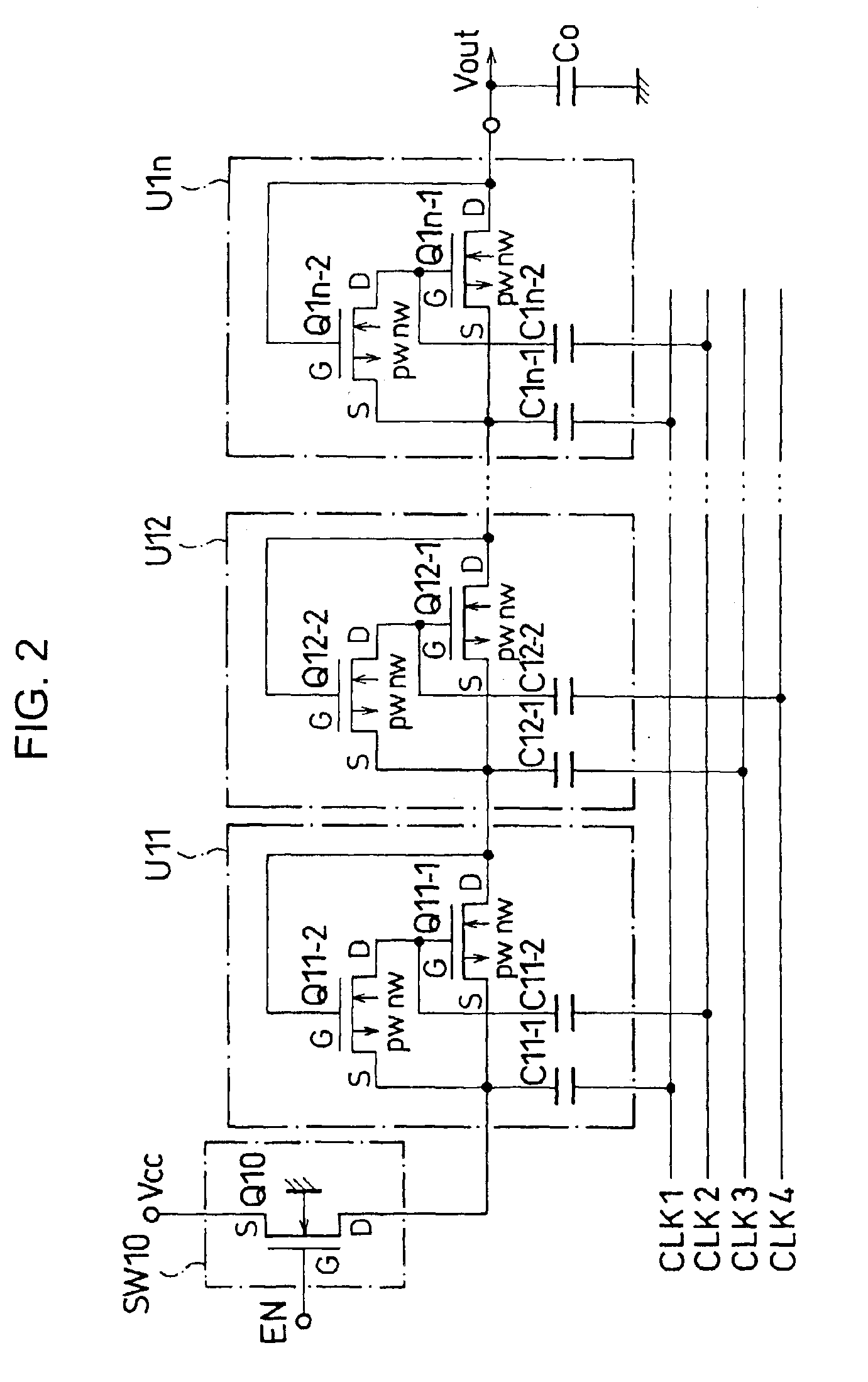Semiconductor device equipped with a voltage step-up circuit
a technology of step-up circuit and semiconductor device, which is applied in semiconductor devices, process and machine control, instruments, etc., can solve the problems of reducing the circuit, reducing the circuit, and not being able to step up the voltage itsel
- Summary
- Abstract
- Description
- Claims
- Application Information
AI Technical Summary
Benefits of technology
Problems solved by technology
Method used
Image
Examples
sixth embodiment
The sixth embodiment has the same structure as the fifth embodiment except for the AND circuit.
[0151]The voltage comparison means Vcom comprise: a first voltage dividing means for dividing the output voltage Vout by resistors R3 and R4 to generate a comparison voltage Vs(=Vout×R3 / (R3+R4)); a second voltage dividing means for dividing the supply voltage Vdd by resistors R5 and R6 to generate a reference voltage Vref(=Vdd×R5 / (R5+R6)); an operational amplifier OP1 for comparing the comparison voltage Vs with the reference voltage Vref to output a startup-time control signal Scon when Vs>Vref; and NMOS transistors Q21 and Q22 connected between the resistor R3 and the ground and between the resistor R5 and the ground, respectively. The voltage comparison means Vcom causes the NMOS transistors Q21 and Q22 to be turned ON upon the rise of the startup signal St to enable the operational amplifier OP1. This arrangement facilitates suppression of wasteful power consumption during a standby.
[0...
PUM
 Login to View More
Login to View More Abstract
Description
Claims
Application Information
 Login to View More
Login to View More - Generate Ideas
- Intellectual Property
- Life Sciences
- Materials
- Tech Scout
- Unparalleled Data Quality
- Higher Quality Content
- 60% Fewer Hallucinations
Browse by: Latest US Patents, China's latest patents, Technical Efficacy Thesaurus, Application Domain, Technology Topic, Popular Technical Reports.
© 2025 PatSnap. All rights reserved.Legal|Privacy policy|Modern Slavery Act Transparency Statement|Sitemap|About US| Contact US: help@patsnap.com



